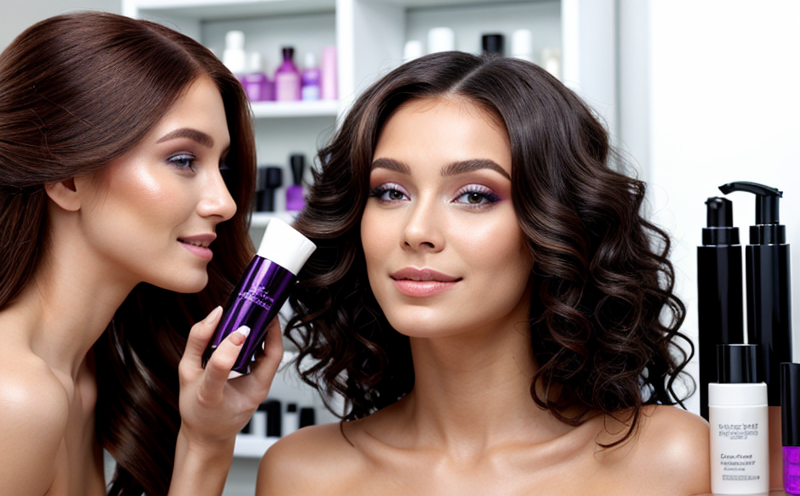Color Stability Testing in Hair Dyes
In the world of cosmetics, particularly within hair care products, color stability testing holds a crucial place. This service ensures that dyes retain their integrity and vibrancy over time under various environmental conditions. Color stability is paramount for maintaining product quality and consumer satisfaction while also mitigating risks associated with fading or degradation.
Color stability tests are conducted to evaluate the resistance of hair dye formulations against light, heat, humidity, and other environmental factors that can cause color change. This testing process involves exposing dyed hair samples to controlled conditions designed to mimic real-world usage scenarios. The objective is to assess how well the dyes withstand these stresses without losing their original color or intensity.
The testing protocol typically follows international standards such as ISO 10993-18:2017, which specifies requirements for the biocompatibility evaluation of medical devices and can be adapted for hair dye formulations. Compliance with these standards is essential to ensure that products meet regulatory requirements and maintain high-quality performance.
During testing, samples are treated in a manner similar to how they would be used by consumers—dyed using the manufacturer’s recommended techniques. After treatment, the samples undergo rigorous evaluation under specified conditions. These evaluations may include visual inspections for changes in color hue or intensity, spectrophotometric measurements to quantify any shifts in wavelength and absorbance, and chromatographic analyses to assess the stability of pigments.
The results from these tests provide valuable insights into product longevity and consumer experience. They enable manufacturers to make informed decisions about ingredient selection, formulation adjustments, and packaging design aimed at enhancing shelf life and maintaining color fidelity throughout the product lifecycle.
Conducting thorough color stability testing not only benefits consumers but also protects brand reputation. It helps companies avoid recalls due to unsatisfactory performance and enhances customer trust in their products. By investing in robust color stability tests, businesses can ensure they deliver reliable, high-quality hair care solutions that meet both regulatory standards and consumer expectations.
In summary, color stability testing is an indispensable part of the cosmetic industry’s quality assurance process, especially when it comes to hair care products like dyes. It ensures consistent performance across all stages from manufacturing through distribution and final use by consumers.
Why It Matters
The importance of color stability testing in hair dye formulations cannot be overstated. Ensuring that dyes maintain their vibrant colors over time is critical for several reasons:
- Maintaining Consumer Satisfaction: Nothing spoils a good hair coloring experience like a sudden loss of pigment or fading. Satisfied customers are more likely to recommend products and repurchase, which translates into long-term brand loyalty.
- Regulatory Compliance: Many jurisdictions require that cosmetic products meet strict quality standards set by governing bodies such as the FDA in the United States or ECOCOSMETHICS in Europe. Adhering to these regulations helps avoid potential legal issues and fines.
- Promoting Brand Reputation: Consistently delivering high-quality products with reliable color retention can significantly enhance a brand’s reputation among consumers.
- Avoiding Waste: Products that fail color stability tests may need to be recalled or disposed of, leading to increased costs and waste. Preventative testing helps minimize these risks.
By prioritizing thorough color stability testing, companies can build a stronger foundation for trust with their customers while simultaneously protecting against financial losses associated with poor product performance.
Benefits
- Informed Formulation: Detailed results from color stability tests provide valuable information that guides formulation adjustments to enhance dye longevity and effectiveness.
- Avoidance of Product Recall: By identifying potential issues early in the development process, companies can prevent costly product recalls later on.
- Improved Consumer Experience: Products with superior color stability offer a better overall experience for users, leading to higher satisfaction levels and increased loyalty.
- Enhanced Brand Reputation: Consistently delivering high-quality products boosts brand reputation among consumers who value reliability and performance.
These benefits underscore the critical role that color stability testing plays in ensuring both product quality and consumer trust within the cosmetics industry.





